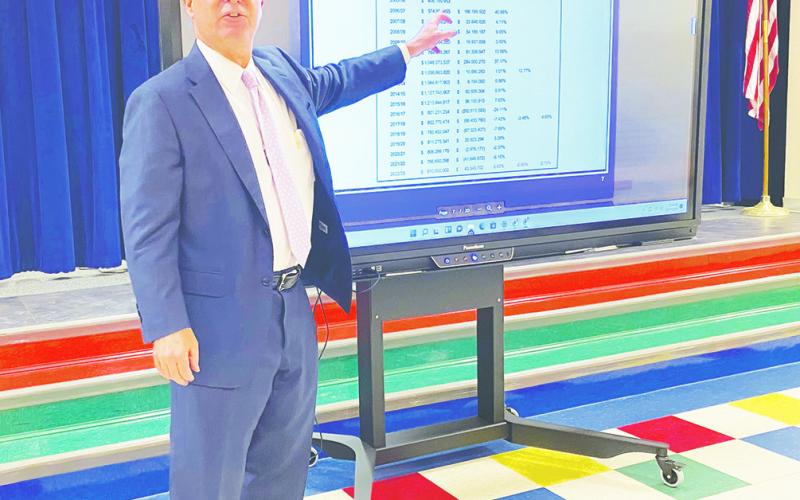JISD facilities group learns about bond
Jacksboro ISD’s Facilities Visioning Committee members learned about potentially funding a bond issue with no increase in the district’s tax rate. During an Oct. 17 meeting, district financial consultant Doug Whitt said much of the reason behind that, if the district did decide to call for a bond issue, comes from the district having paid off previous bonds early (saving taxpayers $17,942,715 in interest charges), having a financial condition that is viewed favorably (good income of residents, strong reserves, an A+ credit rating from Standard and Poors and a solid tax base) and the potential for having more added to its tax base in the form of energy facilities such as wind and solar farms added to it in the near future or what is commonly known as a 313 agreement. A potential of three new agreements is possible, Whitt said.
The district has a net $1.53 million I&S fund balance. The interest and sinking tax rate can only be used for the renovation of school facilities and construction equipment, Whitt said in an hour-long PowerPoint presentation.
Another thing in the district’s favor is having a high tax base per student, Whitt said. That is determined by taking the taxable base of the district and dividing it by the average daily attendance (ADA). Jacksboro’s is $77.68, which is the second highest among similar size school districts in the area. Depending on whether the district has any future Chapter 313 agreements and if it uses some of its fund balance could mean having between $47 and $73 million in bond capacity with no increase in tax rate, Whitt said.
That’s potentially major as the committee will have some decisions to make as there are renovations to be made at all three campuses. Committee members and district staff made suggestions at each of the schools, which include:
Jacksboro Elementary
Renovate some of the classrooms to be turned into restrooms and add four classrooms.
Jacksboro Middle School
Make the round building more functional and move the 7th and 8th grade out to a potential new campus on the high school grounds. They would be replaced by 4th and 5th graders from the elementary.
One of the complaints was having to shuttle middle school students and coaches to the high school for athletics in many cases. Board President Martha Salmon asked if moving the elementary students would eliminate the need for new classrooms at JES and was told possibly.
“There’s a big difference between Pre-K3 and a 5th grader,” Architect Brett Sumrow with Corgan Architects said. “It’s less of a difference if you would have grades 4-6 together.”
Jacksboro High School
The 7-8 campus, which would house no more than 280 students, is just one of the recommendations being needed.
It also includes an expansion of the career and technology wing, enlarging the locker room and including an officials locker room along with an indoor activity center and improvements to the baseball and softball fields. A new band hall and weight room inside the high school have also been suggested.
Whitt said new statutory requirement require separate bond provisions as part of the same bond issues for stadiums that seat more than 1,000; natatoriums; recreation facilities (none including gyms or playgrounds; performing arts facilities; and technology equipment.
JISD Superintendent Brad Burnett said the district is fortunate to have a lot of land at the high school which could be built on. Sumrow said Gallagher Construction is working on some preliminary costs, which will affect what gets built.



